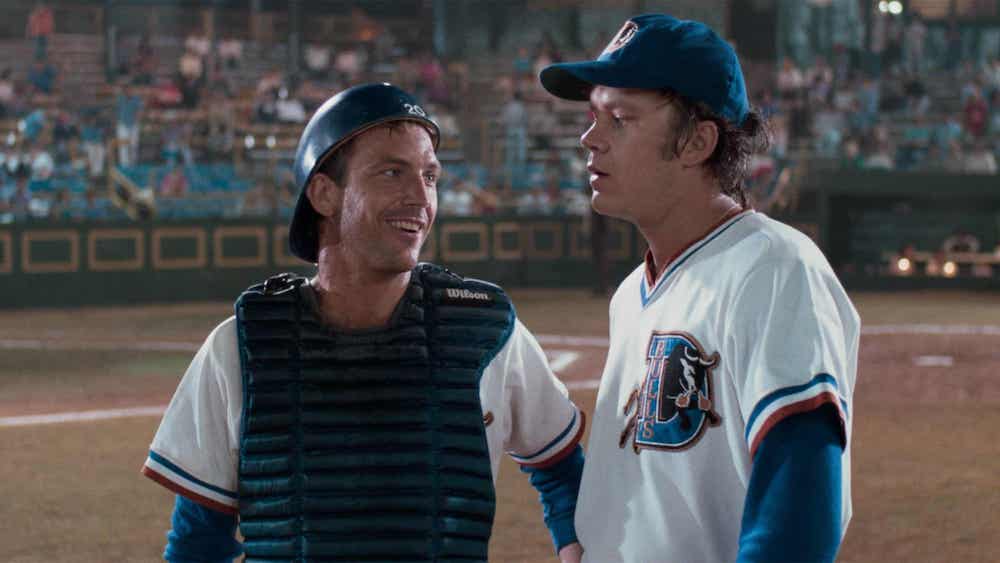In the 1990’s, the art and science of baseball statistics took a major leap forward. That decade saw the rise of evidence-based management in baseball. Using Sabermetrics, the hard luck Oakland A’s under Billy Beane assembled a team of undervalued, overperformers and built a powerhouse dynasty for pennies on the dollar. The approach is immortalized in Michael Lewis’ book Moneyball: The Art of Winning an Unfair Game.
In Moneyball, Lewis outlines the importance of data not just in baseball, but business, and the business of life in general:

Source : Michael Zagaris/Getty Images
“…If gross miscalculations of a person’s value could occur on a baseball field, before a live audience of thirty thousand, and a television audience of millions more, what did that say about the measurement of performance in other lines of work? If professional baseball players could be over- or undervalued, who couldn’t?”
― Michael Lewis, Moneyball: The Art of Winning an Unfair Game
For manufacturers, that’s your alternative. Either you are playing the game with an understanding of your data, or you risk making “gross miscalculations” in your daily operations.
Driving home the point, Lewis interviews Pete Palmer, legendary sports statistician and one of the fathers of Sabermetrics. He sums up the situation that managers find themselves in nicely:
“Managers tend to pick a strategy that is the least likely to fail, rather then to pick a strategy that is most efficient,” Said Palmer. “The pain of looking bad is worse than the gain of making the best move.”
― Michael Lewis
Managers in plants the world over are dealing with these realities. They are making daily decisions, rightly or wrongly, that impact the performance of the business. Many are making these blind or through the use of unreliable and tedious manual reporting providing little context into the factors behind the numbers.
Without manufacturing analytics, a lot of managers aren’t making the best moves, they’re covering their asses, and sadly, not making any moves at all.
The true cost of decisions made without visibility is unknown. Without timely contextual analytics like downtime, or a measure of machine cycle time, there is at best an uncertainty about what’s really happening on the plant floor and what needs to be improved; and at worse, a false confidence that comes when only half the story is understood, a kind of magical thinking.
What is Baseball Without Stats?
Ask any baseball fan or pundit that question and they are stumped. The modern franchise is founded on data. A couple of years ago, ESPN’s Sam Miller spent weeks asking managers and coaches that very question: “Who would be the best player in baseball if you couldn’t use stats?”
What if we had none? Not just no WAR but no nothin’. What if some ministry of information outlawed the collection of baseball statistics and we were all left to judge players exclusively by what we saw, what we perceived and what we remembered? Who would be perceived as the best player in baseball? Who would be the first player chosen in a franchise draft?
— Sam Miller, ESPN, In a world without stats, who’d be baseball’s best player?
Find Your Gorp

Source : 1988 Orion Pictures
Baseball without stats is thought experiment that most in the sport can’t imagine. To help visualize this, Miller invokes the Gorp scene in Bull Durham, in which Crash Davis (Kevin Costner) explains to the rookie the difference between a good player and great one.
“Know what the difference between hitting .250 and .300 is? It’s 25 hits. 25 hits in 500 at bats is 50 points, okay? There’s 6 months in a season, that’s about 25 weeks. That means if you get just one extra flare a week – just one – a gorp… you get a ground ball, you get a ground ball with eyes… you get a dying quail, just one more dying quail a week… and you’re in Yankee Stadium.”
— Crash Davis
Miller’s article again:
“There are 750 active players, spread out across 15 games every day….and If the difference between an All-Star and a fourth outfielder is a gorp a week… then you’re left with 750 major leaguers spread out in a massive ocean of gorps.”
Without stats, players would still play, and games would still be won or lost. A team’s record for the season might provide you some evidence as to who the best ensemble of players really is, but it certainly wouldn’t provide managers with the evidence (and the confidence) to make a trade before the deadline, a starting lineup before the big game, a substitution on the mound or in the batting order in a critical inning.
As in baseball, small consistent upticks in performance matter. Imagine a factory floor gorp that adds 5 minutes of productivity a day on 1 machine. That adds 21 or so hours of productivity per year. What if you add an average of 5 minutes of productivity to 40 machines, the equivalent of a Major League roster? That’s 866 hours of productivity.
Gorp in Manufacturing
Operations on the factory floor work no differently. A lack of reliable manufacturing analytics puts decision makers in a state of loss. It can only be a bad thing.
The true cost of doing business without visibility? It adds up to a incalculable mountain of lost opportunities, i.e. gorps. The increased capacity when machines aren’t sitting idle, an ease to the bottlenecks blocking throughput, calibrations made for better quality counts and reduced scrap, the performance of new machines and the updates to the line, the increased effectiveness of your operators and managers when they see performance on the plant scoreboard, an increase of on-time deliveries that lead to happier customers, and on and on.
As in baseball, small consistent upticks in performance matter. Imagine a factory floor gorp that adds 5 minutes of productivity a day on 1 machine. That adds 21 or so hours of productivity per year. What if you add an average of 5 minutes of productivity to 40 machines, the equivalent of a Major League roster? That’s 866 hours of productivity.
If you can’t imagine managing a baseball team without stats to guide you, then you’re in good company. But if you don’t have manufacturing analytics on your plant floor to provide you visibility, you might as well be choosing your fantasy baseball team by random, hoping you pick the best players, oblivious to the many small changes that could make things better, and praying that the universe somehow magically provides you with a few extra gorps or two a week.


